Within minutes, the armed raiders had separated the men from the women and children. Then the shooting started.
As Mr. Khan was driven away for questioning, he watched his home go up in flames. Within were the bodies of two of his brothers and of his sister-in-law Khanzari, who was shot three times in the head. Villagers who rushed to the home found the burned body of her 3-year-old daughter, Marina, in a corner of a torched bedroom.
The men who raided the family's home that March night, in the district of Nader Shah Kot, were members of an Afghan strike force trained and overseen by the Central Intelligence Agency in a parallel mission to the United States military's, but with looser rules of engagement.
Ostensibly, the force was searching for militants. But Mr. Khan and his family had done nothing to put themselves in the cross hairs of the C.I.A.-sponsored strike force, according to investigators.
It was clear that the raiding force had "committed an atrocity," said Jan-mir Zazai, a member of the Khost provincial council who was part of the government investigating team. "Everyone we spoke to said they would swear on the innocence of the victims."
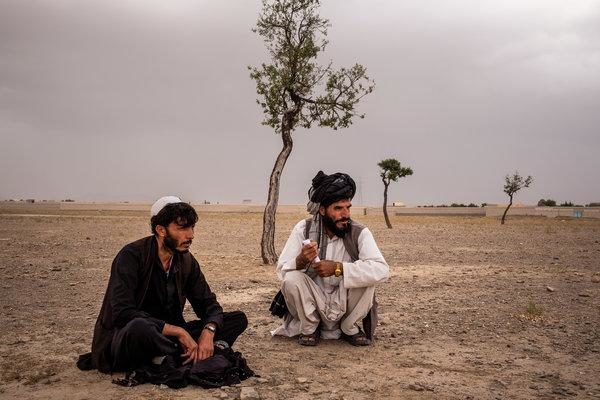
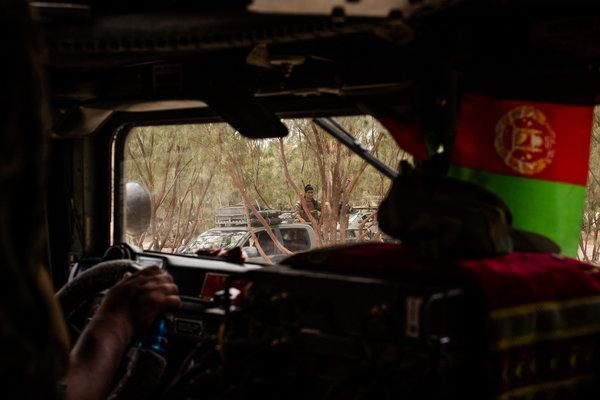
But the units have also operated unconstrained by battlefield rules designed to protect civilians, conducting night raids, torture and killings with near impunity, in a covert campaign that some Afghan and American officials say is undermining the wider American effort to strengthen Afghan institutions.
Those abuses are actively pushing people toward the Taliban, the officials say. And with only a relatively small American troop contingent left - and that perhaps set to drop further on President Trump's orders - the strike forces are increasingly the way that a large number of rural Afghans experience the American presence.
Many of the strike forces were officially put under the control of Afghan intelligence starting in 2012. But senior Afghan and international officials say that the two most effective and ruthless forces, in Khost and Nangarhar Provinces, are still sponsored mainly by the C.I.A.
Those fighting forces, also referred to as counterterrorism pursuit teams, are recruited, trained and equipped by C.I.A. agents or contractors who work closely with them on their bases, according to several current and former senior Afghan security officials, and the members are paid nearly three times as much as regular Afghan soldiers.
The Afghan ownership of those two units is only nominal, a liaison relationship in which intelligence headquarters in Kabul has representatives on the mission for coordination. But the required pre-approval for raids is often last-minute, or skipped until afterward, the officials say.
For months, The New York Times has investigated the human toll of the C.I.A.-sponsored forces on communities. Times journalists researched frequent complaints - at times almost weekly - that these units had raided and killed civilians, and The Times went to the sites of half a dozen of their raids, often less than 24 hours after the force had left.
The investigation found details of a C.I.A. mission with tactical successes that have come at the cost of alienating the Afghan population. One former senior Afghan security official bluntly accused the strike forces of war crimes.
Often, the raids that resulted in civilian deaths were carried out not far from police outposts or government offices, leaving those American-supported officials humiliated in the villages they had been trying to establish relationships with. And because the C.I.A.-sponsored units often use English during operations, their abuses are even more directly equated with the American presence, though claims that American agents have sometimes been on the missions have not been confirmed.
"The dilemma is this: The C.I.A. needs to fight its wars in the shadows," said Karl Eikenberry, a former commander of American forces in Afghanistan who later served as the United States ambassador to Kabul. "But when the U.S. also takes on the mission of state-building, then the contradictions between the two approaches - stealth, black ops, and non-transparency vs. institution building, rule of law, and accountability - become extraordinarily difficult to resolve, and our standing as a nation suffers."
United Nations reports have expressed concern about civilian deaths and "consistent, credible accounts of intentional destruction of civilian property, illegal detention, and other abuses" by the units. The United Nations said the forces in Khost, in particular, operated outside the Afghan government's structure "with an absence of transparency and ongoing impunity."
In the village of Nader Shah Kot, the provincial official who helped investigate the raid, Mr. Zazai, said the force's impunity was alienating residents from the government and increasing support for the Taliban.
"If there had been arrests, if there had been justice, this wouldn't continue like this," Mr. Zazai said. "But there is absolutely no justice."
American defense officials in Washington say the C.I.A. operations in Afghanistan are largely opaque to military generals operating in the war zone. The C.I.A.'s level of partnership has been declining as the Afghan intelligence agency and its forces grow more mature, the officials said. But as American military forces are set to draw down, the role of the Central Intelligence Agency is only likely to grow in importance.
A spokeswoman for the C.I.A. would not comment, nor would Afghans directly involved with the forces. Afghan security officials in Kabul tried to play down the level of the forces' autonomy and the nature of their abuses. When pressed with details of specific cases, they did not respond.
The number of casualties varied among the cases The Times investigated. In one, two brothers were killed as they watered their fields before dawn after receiving permission from the local security outpost. In another, a unit pursuit of a Taliban target went into the wrong house in Laghman Province and killed 12 civilians, officials there said.
One of the most gruesome episodes examined by The Times was in Khogyani District, in Nangarhar Province. The forces handcuffed and hooded two brothers and, after a brief interrogation as their wives and children watched, both men were dragged away and executed in a corner of a bedroom that was then detonated over their heads, according to relatives and villagers who pulled the bodies out of the rubble.
When Times journalists arrived at the house 16 hours after the raid, the area was a scene of carnage with burned vehicles and crumbled walls. The family's patriarch, Hajji Hassan Jan, 60, said that a security outpost overlooked their house, and that the district's intelligence chief, who was a regular guest for dinner, had no answer for why the house was raided and his sons killed.
Still, he tried to guess: It was probably for feeding the Taliban. In rural Afghanistan, traditions of hospitality demand that you feed whoever knocks at your door. When those men are armed, there is little choice.
"The forces once asked my son, 'Why do you feed the Taliban - why cook chicken for them, or bring them yogurt?'" Mr. Jan said. "My son told them: 'We made chicken for them. If you come, we will make an entire lamb for you.'"
Rooted in Counterterrorism
The origin of C.I.A.-sponsored strike forces in Afghanistan was in the early days of the American invasion in 2001, when the United States allied with militia forces to help topple the Taliban regime.
Comment: Indeed. The invasion and occupation of Afghanistan was a CIA project from the beginning. See: The Watchdogs Didn't Bark: The CIA, NSA, and the Crimes of the War on Terror.
Once the Taliban and Al Qaeda started fleeing, often across the border into Pakistan, there was no organized Afghan force to create the needed lines of defense.
In the eastern province of Khost, largely under the influence of the Haqqani network, which had strong ties to Al Qaeda, the C.I.A. started organizing local militias into a force that could strike at insurgents as they tried to come in or out.
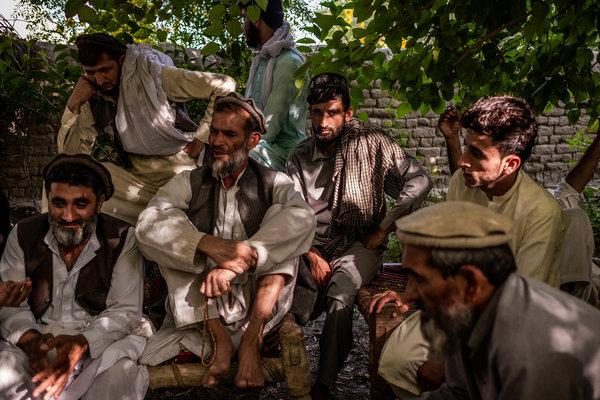
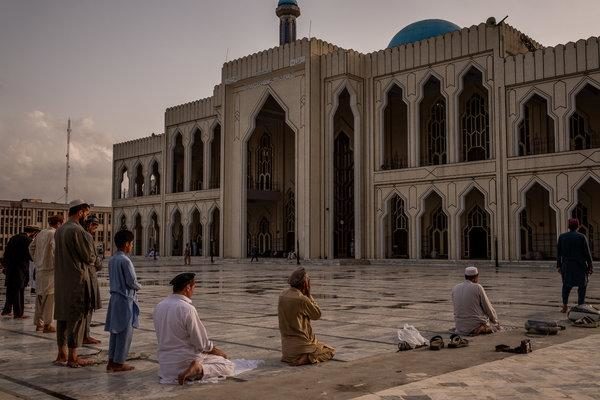
It was meant to be a stopgap program. But the force proved so effective, even after the Taliban started coming hard at the government and the American presence, that it kept expanding to other parts of the country.
In Khost, the so-called protection force was consolidated and based out of Camp Chapman, the main C.I.A. outpost there. The unit in Khost still has the largest number of fighters, though the exact count is unclear: Officials put the number anywhere from 3,000 to over 10,000. It patrols border areas and also runs its own network of informants.
Commander Ghafar said he believed the forces remained necessary, otherwise the defense against Haqqani-run suicide bombers would buckle, making it easier for attackers to reach Kabul. On the other hand, he said, their abuses were taking a toll.
Former President Hamid Karzai spent years trying to rein in American forces from carrying out night raids that angered villages and set them against his government, only to realize that the C.I.A.'s Afghan forces were doing the same.
One episode in particular made Mr. Karzai furious. In 2009, the strike force in Kandahar tried to forcibly release one of its colleagues detained by the police on criminal charges. When the most senior law enforcement official in the province, Gen. Matiullah Qateh, resisted, he and several of his officers were shot dead, former and current Afghan officials say. The C.I.A. reluctantly surrendered the guards involved in the killing of the general, after the Afghan leadership threatened to use force.
Mr. Eikenberry, the former general and ambassador, said the C.I.A.-sponsored forces "which operated outside of the framework that governed those under sovereign control of the Afghan government" raised concerns from the beginning.
"But Bin Laden was not yet found, Al Qaeda was active in the border areas, and Afghanistan did not have forces capable of dealing with what was regarded as an existential threat to the U.S. So the concerns never led to action," Mr. Eikenberry said. "The problem was one to be solved later in the campaign, so to speak. And the C.I.A. was the dominant voice in the chamber."
A Surge of Abuse
Several current and former Afghan officials said that the C.I.A. still largely commanded the strike forces in Khost and Nangarhar, effectively putting the units above the law. American agents and contractors work closely with them on their bases, develop the targets for them, and help guide the operations from headquarters. And the Americans have a presence at bases where detainees have accused the units of torture and abuse, officials say.
In a period of a little over a year, human rights officials registered at least 15 complaints of torture by the strike force based in Nangarhar Province, which has roughly 1,000 fighters and is known as "02."
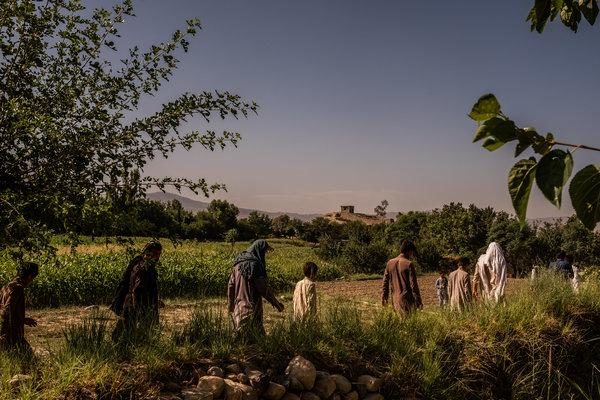
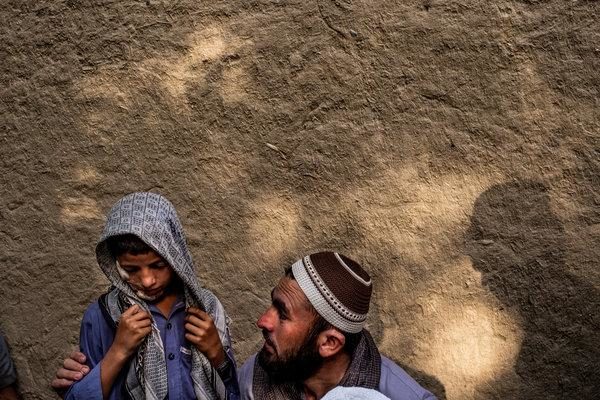
"Before the people start protests, before the people pick up weapons against the government, the government needs to rein in these kind of reckless operations," said one tribal elder, Malik Zaman.
Mohammed Taher, from Khogyani District, said he and two of his brothers were detained in a night raid last spring. He was held for three months and five days, about a week of it at the air base in Nangarhar where the strike force is based.
"They said, 'We will drive a tank over you if you don't say your brothers are Taliban.' I said, 'If you have evidence that they are, show me,'" Mr. Taher said. "They wanted me to say all that so they could take a video of me saying it."
Mr. Taher said Americans were present during the raid when he was detained, but he did not see Americans during the questioning and the torture at the base. His mistreatment stopped when he was handed over to the regular Afghan intelligence force, he said.
"My hands were cuffed. They punctured these veins with needles and blood was running," he said.
Sabrina Hamidi, who leads the Afghan Human Rights Commission in the east, said that during her 13 years of work at the commission she could not recall a single example of access to the regional forces to examine accusation of abuses.
"In their operations, most of the times the harm to civilians is direct," Ms. Hamidi said about the 02 unit. "When they make arrests, there is usually torture involved, also."
In nearly every case examined by The Times, the victims' families said they were at a loss for where to seek justice, or an explanation of why they had been raided. And nearly every government official in those areas expressed helplessness about the strike forces' operations.
'I Thought It Was the Caliphate'
In the Bati Kot district of Nangarhar Province, the strike forces conducted a raid in May, leaving their headquarters at the air base in Jalalabad and arriving in a convoy of several dozen vehicles at a village surrounded by corn fields and orange orchards.
One resident, Khoshal Khan, who works at a medical university, thought at first that the raid was an attack by the Islamic State.
"I ran and got my weapon - I thought it was the caliphate people. I didn't know it was the government," Mr. Khan said. "Then they started firing, and I heard the gate blown up. They were speaking English, also."
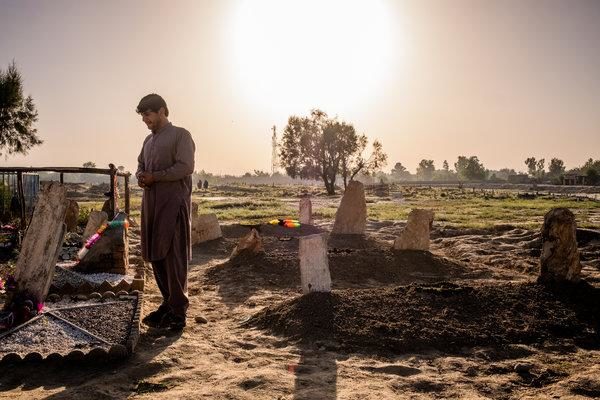
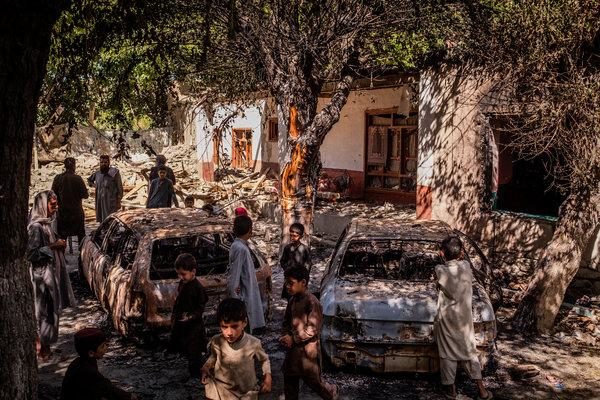
When Times journalists arrived the day after the raid, the bed was broken, the mud roof under the bed patched with blood, just steps from dried tomatoes sunning on a tarp.
One of Mr. Taher's grandsons, Sekandar, 16, was visiting from Jalalabad during a school break. He was sleeping in the yard and was awakened by gunshots, he said, spotting the light from the raiders' laser sights racing around. Sekandar said the forces spoke both Pashto and English.
The strike force had climbed ladders and was on the walls of the house, ordering Mr. Taher's family to come out. But Sekandar said that when they followed the order to come out with their hands up, one of Mr. Taher's sons, Naeem Shah, was shot in his left hand. Then a grandson, Shaker Khan, was shot in the head.
"The women started crying. They called to be quiet, then they blew up the gates and came in," Sekandar said. His account matched those of other family members and neighbors.
Another of Mr. Taher's sons, Mohammed Raheem, had also been gunned down. The remaining men were handcuffed, and the women and children were put in one room.
Before the forces started leaving about two hours later, with Naeem Shah still wounded, the fighters warned the family not to come out for an hour after they had left, said Mr. Shah's young son, Adel, 10.
"They said, 'Don't come out - if the airstrikes hit you, then don't complain,'" said Adel, whose face had shrapnel wounds from the raid. While the family waited in the house, Adel's father bled to death in the yard.
The district governor's office is just 100 yards from the house, and there are two police outposts nearby.
Mohibullah, a relative of the dead, said that for him, there was no difference between the C.I.A.-sponsored force and the Islamic State if the result was to be attacked with no warning.
"What is the need for raiding me at night?" he said. "Send me a warrant. If I didn't show up, then you can bring your tanks and fly your planes and destroy me."
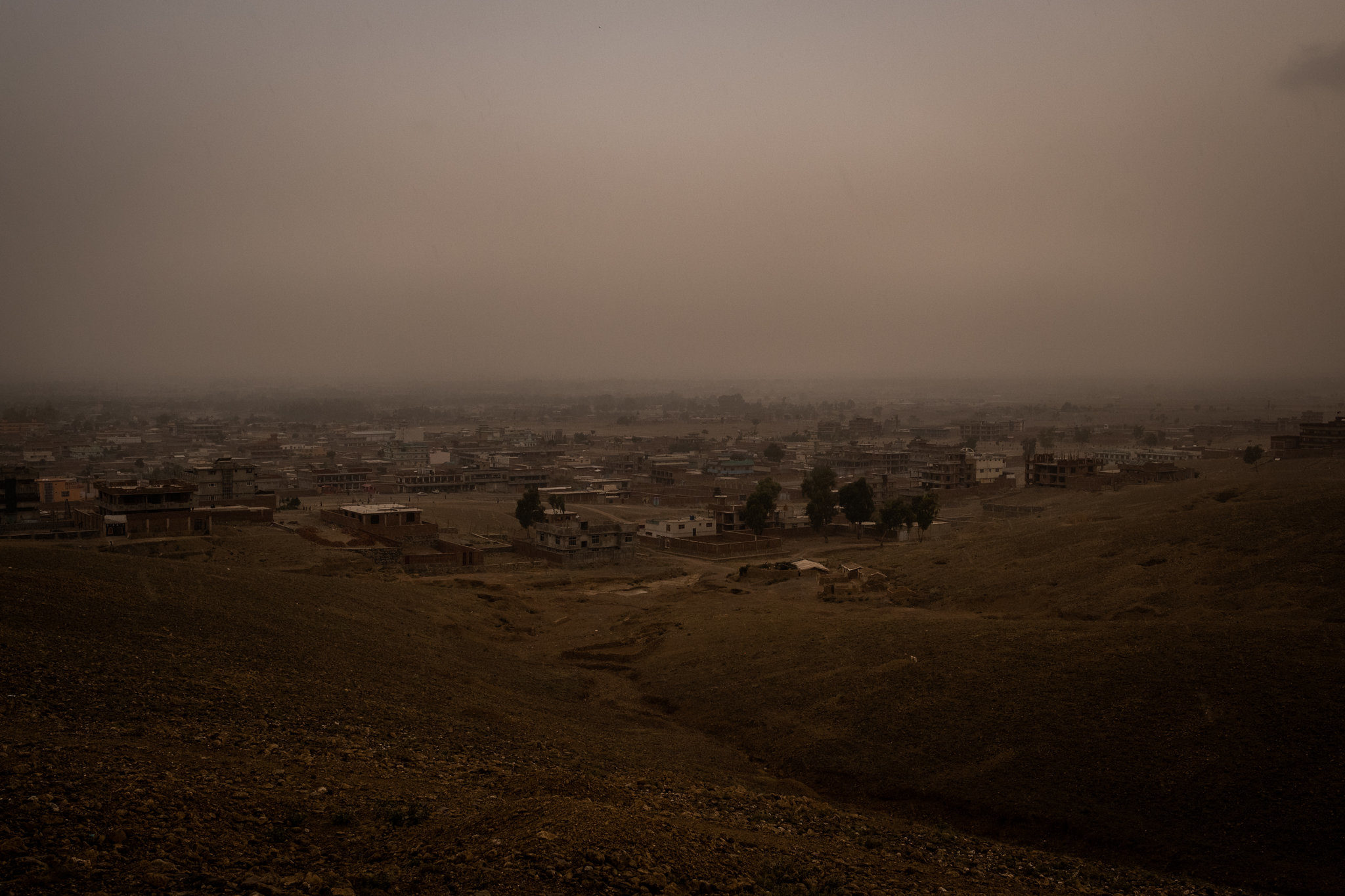



Comment: The CIA has been running a modern-day Phoenix Program in Afghanistan for going on 2 decades. It's no wonder the Taliban is winning. See Doug Valentine's The CIA as Organized Crime: How Illegal Operations Corrupt America and the World for the details.